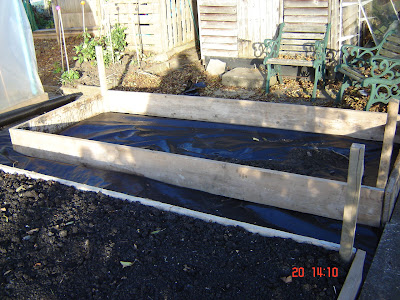
 Whilst I normally plant our garlic in late September or early October, this year some had to wait until today due to other commitments. Some of the cloves had started to shoot so it really needed to be planted. Be ruthless and only plant big cloves as shown in the top picture, any small ones can be used in the kitchen so as not to waste them.
Whilst I normally plant our garlic in late September or early October, this year some had to wait until today due to other commitments. Some of the cloves had started to shoot so it really needed to be planted. Be ruthless and only plant big cloves as shown in the top picture, any small ones can be used in the kitchen so as not to waste them.Despite the recent rain and frosts, the growing medium in my raised beds is friable and ready for planting as shown in the bottom picture. The last bed of garlic is now in and tikme will tell if the later planting makes much of a difference.
















































